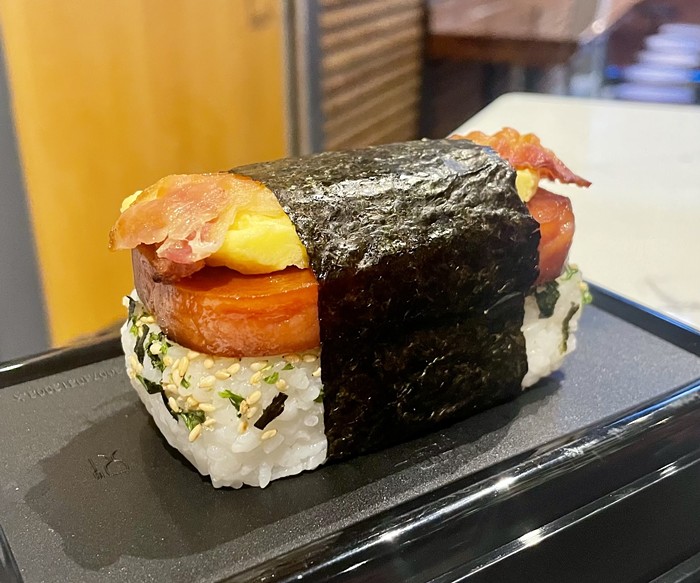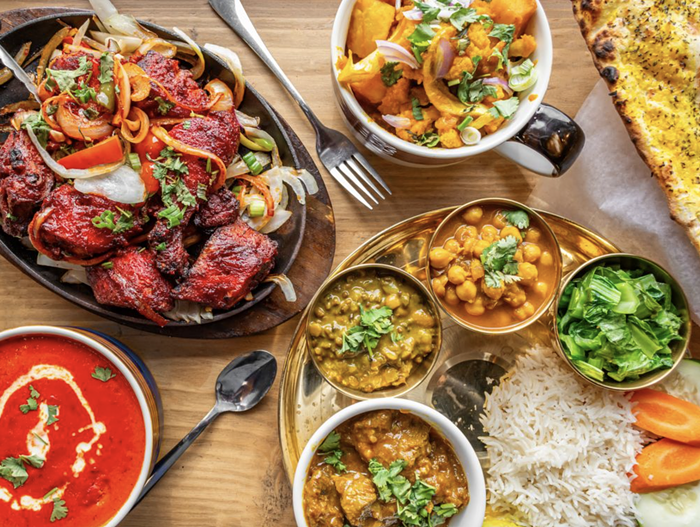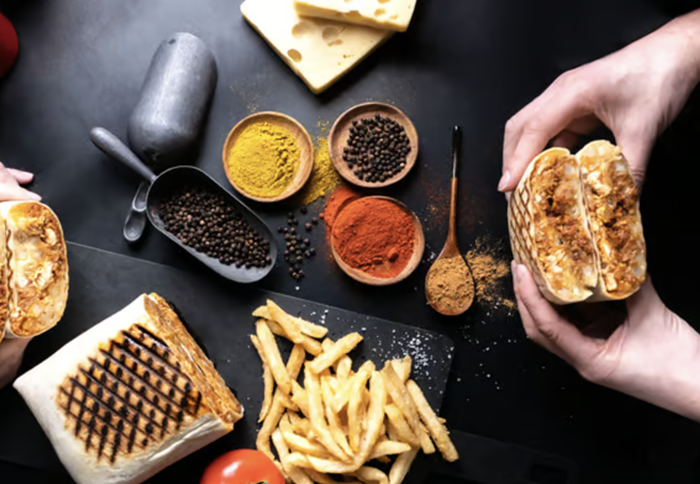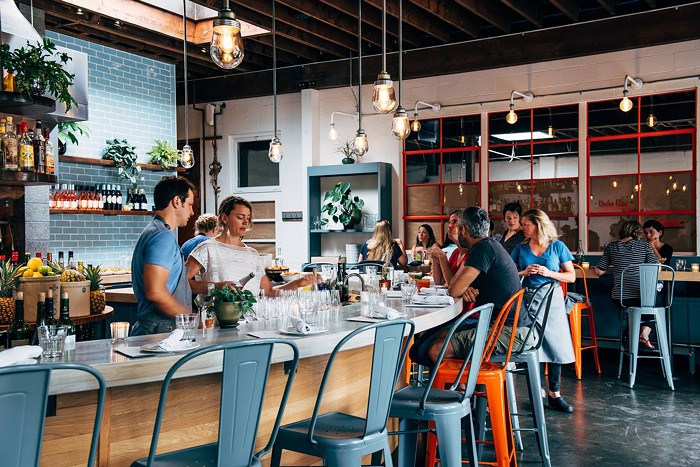Dressed in a white chef coat, Monsoon's Robert Ong is a skinny guy with a laconic air and a bit of a Joey Ramone stoop. At Monsoon, the wok work isn't constant, so Ong can take the time to sip a beer or a glass of milk in between bouts. But when a wok order is placed, peek up over the half wall in the kitchen: Ong is a blur, ladling things into the pan with both hands, tossing them around the wok, while puffs of steam and occasional flames jet up into the stove's massive hood. Most dishes are cooked within a minute, two max, then shaken onto a plate, and served, still exuding what food writer Grace Young describes with the Cantonese term wok hay—the breath of the wok, a chi-like combination of heat, aroma, flavor, and sheer energy that is the essence of a great stir-fry.
I'm afraid I can't make it anonymously into Monsoon—I was a semiregular long before I started reviewing, and I know Ong well enough to say hey and take a look at his ferocious wok stove after a meal. My admiration, however, is unbiased. On a recent visit, wok-cooked asparagus stalks ($8) were served just a hair crisp, their freshness corrupted deliciously with the feral taste of preserved black beans. In a more complex dish, thin slices of venison ($18), still tender and pink, were tossed with sharp bits of fried ginger, slithery cellophane noodles, wood ear mushrooms, and just a drop of understated curry. And I don't really have words for the fried noodles cooked with mushrooms and duck egg ($12)—they are rich on the order of foie gras, but cut with just the right amount of green onions and black pepper. Caramelized shrimp ($19) are the only disappointment—lovely and lacquered as they are, they are chewy and flat tasting.
While Monsoon shoots for elegance, Thai Tom goes for sheer spectacle. You have to play by the rules: If you go for dinner, there will be a wait when you get there. You will place your order long before you sit down, and if you get a good seat at the counter, you will be asked to lean away every two minutes or so when the waiter grabs another order to deliver.
This is all part of the greater show that comes from watching a wok master like Thai Tom owner Tom Suanpirintra. Suanpirintra is a grade-A badass, with hair tied in a topknot and tribal tusks sticking out of his earlobes. Unlike Ong, he multi-woks—four or five at a time, shaking the pans, testing the curries with a dip of a spoon, spinning to grab some veggies or ladlefuls of mystery liquids to fling into the pans. As he cracks an egg to finish off yet another panful of pad thai, a comet trail of egg white hangs in the air. The floor is littered with peanuts and bean sprouts, and an assistant waits wide-eyed for his cue to restock the chicken in the ice bath. The action is as ceaseless as the orders, which pile up in daunting numbers.
Traveling just a few feet from stove to counter, the food is certainly full of wok hay. The chicken with eggplant ($6.50) practically pants with chili and basil, and a pad thai ($6) that refuses to pander to American sweet teeth with globs of ketchup gets its caramelized flavor straight from the wok. But at Thai Tom, I wolf my food down, I don't savor it—it's just not as nuanced as Monsoon's wok dishes. For sheer showmanship there is no doubt that Thai Tom is the winner—as it is on value—but if I had one last meal before a stomach stapling, it might well be Monsoon's duck-egg noodles. 


















